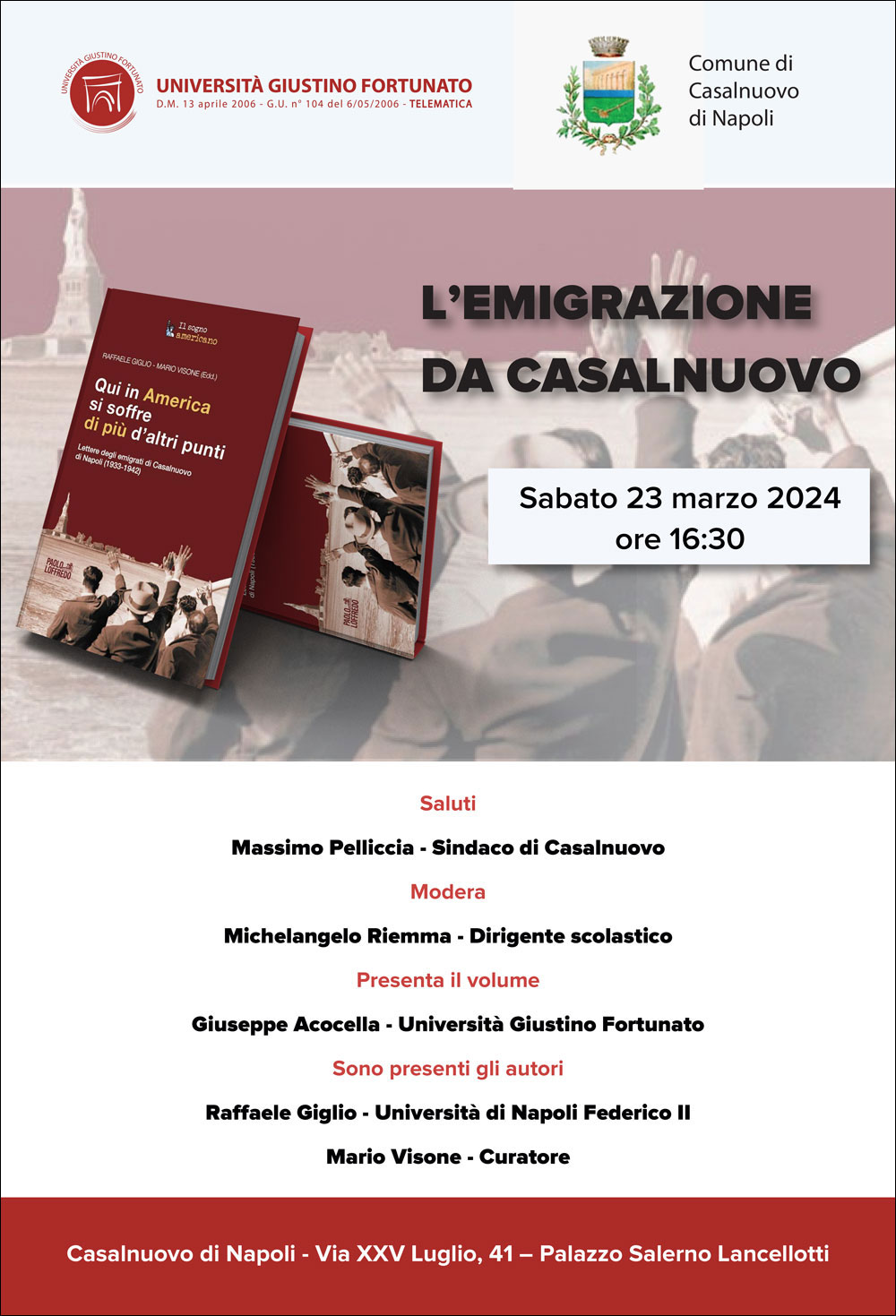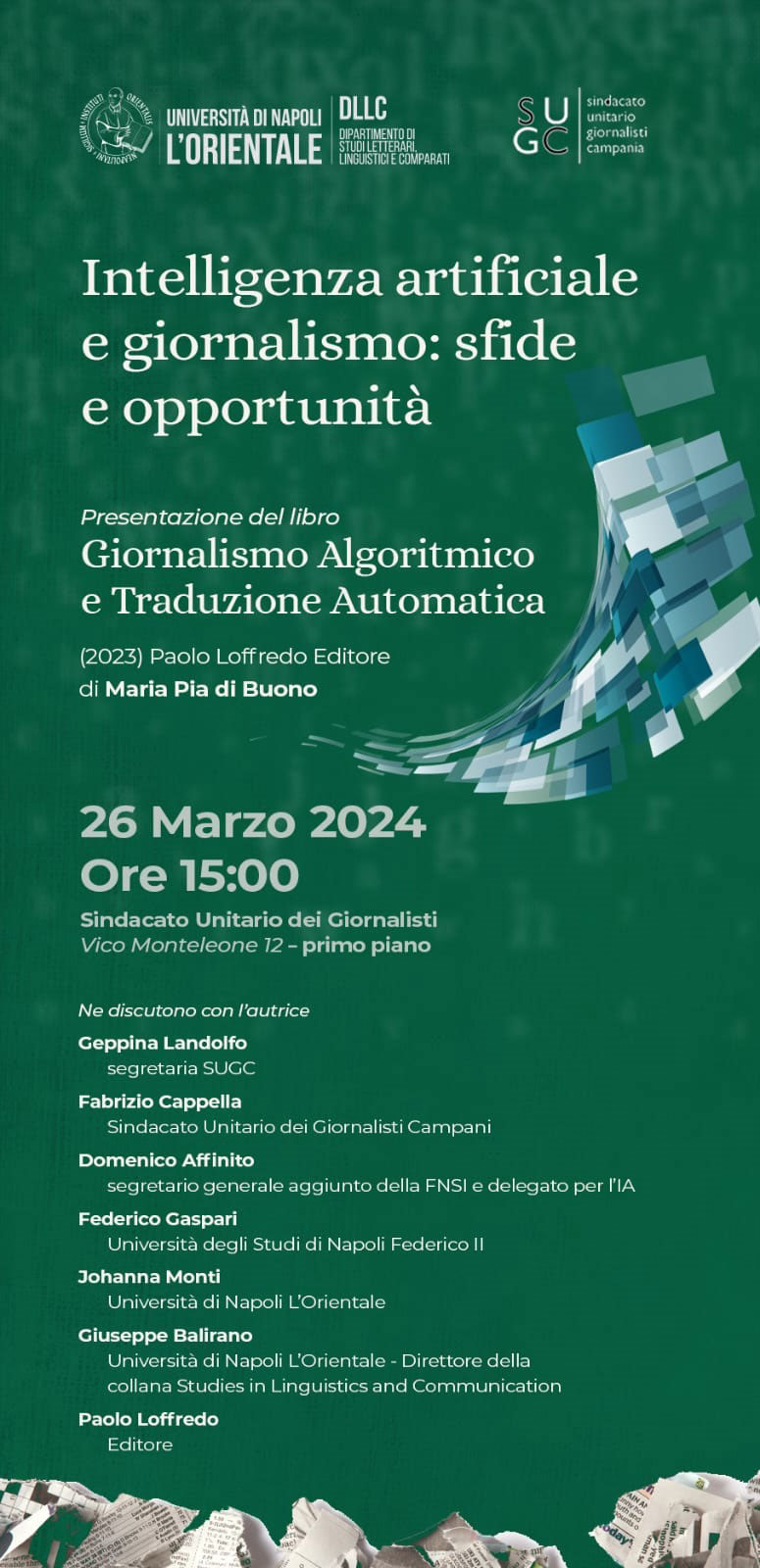 Paolo Loffredo, sixth generation of a large family of publishers and booksellers engaged in the production and distribution of books since the late nineteenth century, creates in 2012 the new editorial company Paolo Loffredo Editore. The historical site was until the '80s in the heart of the historic centre of Naples in Via San Biagio dei Librai, lower Decumano and also known as the SpaccaNapoli.
Paolo Loffredo, sixth generation of a large family of publishers and booksellers engaged in the production and distribution of books since the late nineteenth century, creates in 2012 the new editorial company Paolo Loffredo Editore. The historical site was until the '80s in the heart of the historic centre of Naples in Via San Biagio dei Librai, lower Decumano and also known as the SpaccaNapoli.
At the beginning of the twentieth century, Giuseppe Loffredo decided to add book selling to the book production, which definitively imposed itself after World War II with the publication of manuals for the University and for the School that succeeded in establishing themselves soon throughout Italy.
LAST EVENT
"L'emigrazione da Casalnuovo"
23 Marzo 2024 - Palazzo Salerno Lancellotti Ateneo, via XXV Luglio, 41 - Casalnuovo (NA) - ore 16,30

--------------------------------------------------------------------
"Intelligenza artificiale e giornalismo: sfide e opportunità"
26 Marzo 2024 - Sindacato Unitario dei Giornalisti - vico Monteleone, 12 - primo Piano - Napoli - ore 15,00

Il maestro ZT in Puglia
ISSN :
Language: Italian
Publisher: Paolo Loffredo Iniziative Editore Srl

Description
Il maestro ZT in Puglia
Bagliori cromatici di un pittore del Cinquecento
Every painting hides a story, every story is made to be told. This contribution has only one objective: to promote and realize the broad and profound intelligence of the masterpieces of our monogrammarist Z.T. A painter to be reevaluated, with works that are a sublime synthesis of imagination, originality and versatility: just observe the singular pictorial sequence of Alezio (LE). We are at the peak of sixteenth-century art in Puglia and Basilicata, and the Mu.Di.GRA. Benedetto XIII of Gravina in P. (BA) is a treasure chest of recognized protection of the constant patronage of the Orsini - Del Balzo. He preserves works worthy of being collected, studied and made known.
The artist's portfolio becomes the necessary tool for the historicization of our Master's activity, to communicate the value of his works, to revive them and prevent time from condemning them to oblivion.
The studio pays particular attention to the tempera paintings on sargas depicting the Annunciation, Saint Peter and Saint Paul, artefacts from the 16th century. invoice and commission to be defined.
In the Appendix the reader comes across a disruptive artistic enrichment with the polychrome wooden work of Saint Lucia and her Spanish estofado of astonishing and unprecedented workmanship. There is also the technical and symbolic study of the sixteenth-century oil painting of the Resurrection, probably executed not only by Antonio Stabile.
The second part ends with an oil painting on canvas of the Ecce Homo, with a Catalan style, by an artist unknown, who may have left his signature in the compositional technique.













